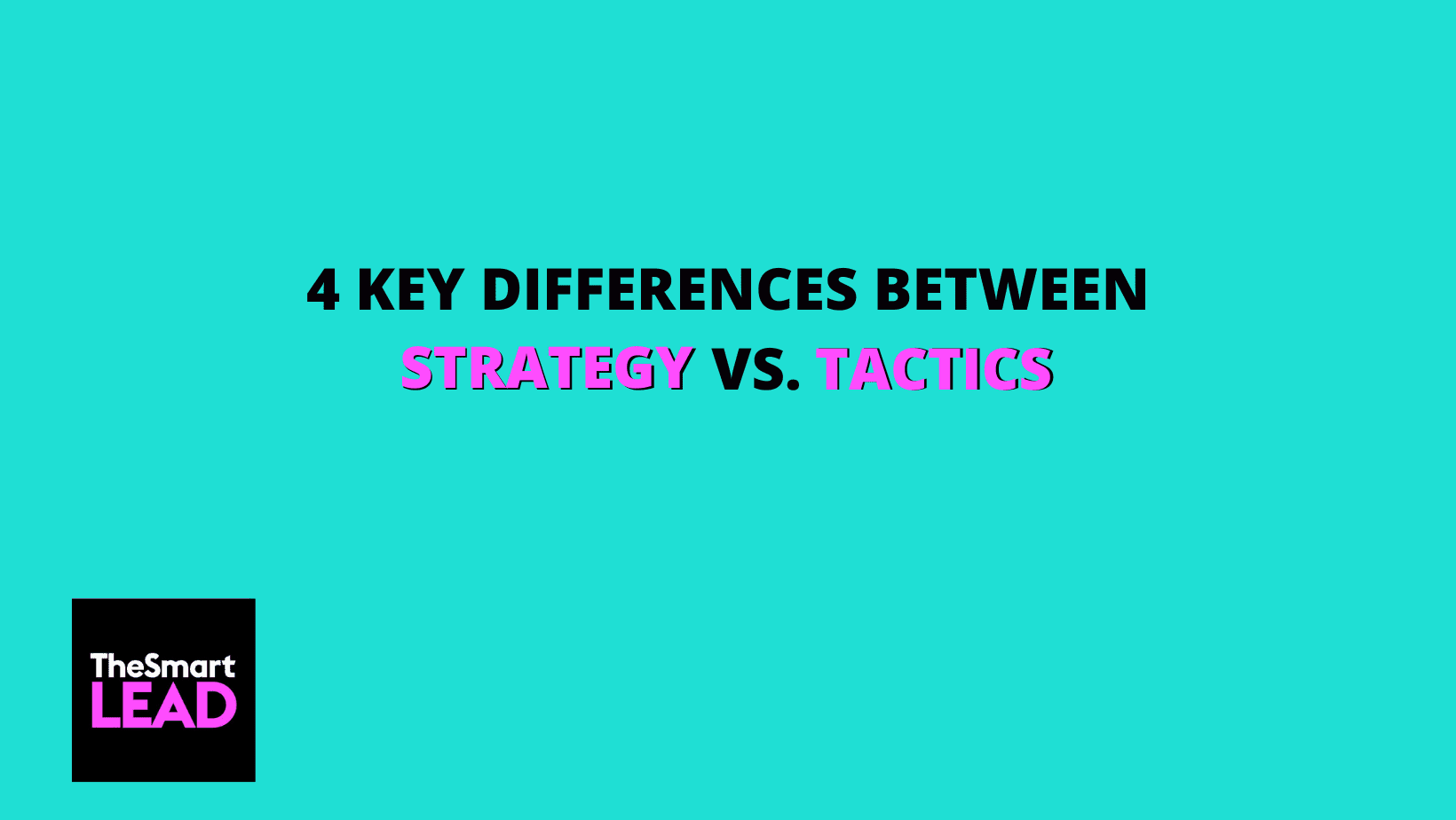4 key differences between strategy vs. tactics
What is the difference between strategy vs. tactics? This is one of most common questions among clients when discussing a marketing plan.
The tendency is to think that are synonymous which lead to have a poor strategy where tactics aren’t defined, risking to bring the business in the opposite direction desired.
So let’s clear the confusion by giving a clear definition. We call strategy the marketing activity needed to achieve your business goals and vision and defines your long-term goals, whereas tactics are the concrete details of the strategy to make that happen oriented toward smaller steps and a shorter time frame along the way.
More in depth, strategy includes segmentation, targeting and positioning while tactics marketing mix, editorial plan and detailed funnel marketing from landing page to action.
1. Strategy sets a specific long-term vision
If you picture your business as a pyramid, strategy should define the linkage between goals at the bottom, mission and vision at the core and purpose at the very top and how to achieve them through resource allocation.
How can you know if you set your strategy right? If you can relate to specific targets which performance can be review against. A company lacking of specific targets is a common problem and it’s a clear sign that there is no strategy but tactics only.
Another way to verify this is to ask yourself: Can I communicate my future vision both to people inside my business and beyond to partners and other stakeholders? If so, you got it right as you are able to clearly express a long term vision and not only the actions in the short term.
Remember that strategy sets specific long-term objectives whereases tactics support the overall direction of a business. They should contribute to the overall aims of the business. The best way to check that tactics match strategy is to link tactics objectives against strategies. For example, if you sell high quality wine and your strategy states that you will target only high net worth clients your tactics should aim to have a website with an exclusive design and advertise on high net worth websites (caviar, luxury holidays, exclusive dining…).
2. Strategy defines competitive advantage
A well-set strategy embodies all the unique characteristics that differentiate your company from competitors and it marks the difference with tactics. Marketing strategy defines priority markets, audiences and products or services and this is where segmentation, targeting and positioning fits. On the other side, tactics involve thinking the best way to communicate these your audience. Many company could have similar strategies but what make them different is the way they approach the market using specific tactics for example what price, how to sell (online, off-line or both), which type of promotions and when, what products/services, advertising colour and style…
3. Strategy defines branding
A crucial part of segmentation, targeting and positioning is defining key audiences and marketing personas, which will inform the tactics of how you reach and communicate to these audiences. Once our target audience characteristics, preferences and behaviours are defined through personas, the strategy involves defining how we want our brand to be perceived relative to competitors.
Branding occupies both a strategic and tactic level but in different ways. It can be considered at a tactical level, for example, which brand colour to use and at strategic level, for example, how a business can appeal to audiences through key messaging including message architecture and tone-of-voice.
4. Strategy defines budget allocation
An essential part of the strategy is deciding how to allocate resources to drive the biggest impact. This decision outlines also where you want to invest and where you can’t or don’t want to. For example, if you are a small business and have a small marketing budget you need to choose wisely the areas where you want to spend money in. After having defined your positioning and branding, it’s time to select the advertising channels you will spend on, marketing tools you will need to buy or agencies or people that will help you with some projects. On the other hand, tactics will define how to manage the day-to-day budget allocated and resources involved to have the best results. To get a better response from our tactics it’s key to use data and technologies. Think about techniques like AB testing available through conversion optimization tools to get the best results from the tactics we use. But to do this modern marketing strategy requires a marketing technology stack to be defined to achieve this
In the era of digital transformation, many organizations are adopting marketing technology to improve their processes and use of customer insight and data. It’s important to plan your investment accordingly with the future marketing trends. The investments in digital experiences, marketing automation and artificial intelligence will be significant.
A solid strategy will plan this budget on longer-term roadmaps to build an integrated martech to be defined to support your future marketing goals in line with marketing trends.
For any company approaching a voluntary or needed shift in marketing strategy it’s vital to define a strong strategy supported by clear and measurable tactics as this is what will make your business successful by differentiating it from your competitors.
Learn how we can maximize your results. Book a call filling the below form or you can do it directly from here.
Se sei interessato, compila il form sottostante
per essere ricontattato
Per maggiori informazioni sui servizi offerti, contattaci qui:
Seguici su:
Iscriviti alla nostra newletter
THESMARTLEAD LTD. Numero di registrazione: 12579443, Indirizzo: London, UK, CAP: SW4 8FA. Registrata in Inghilterra & Galles.
Tutti i diritti riservati 2021- Privacy policy – Cookie policy
